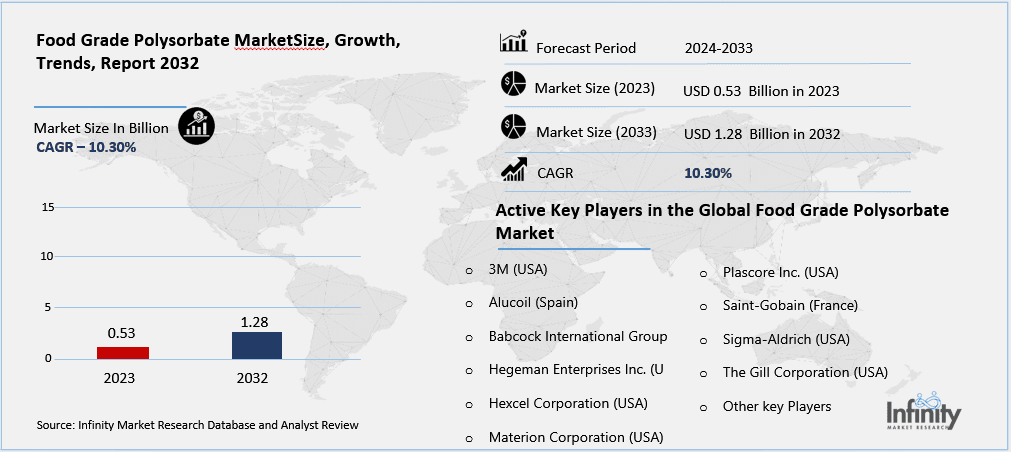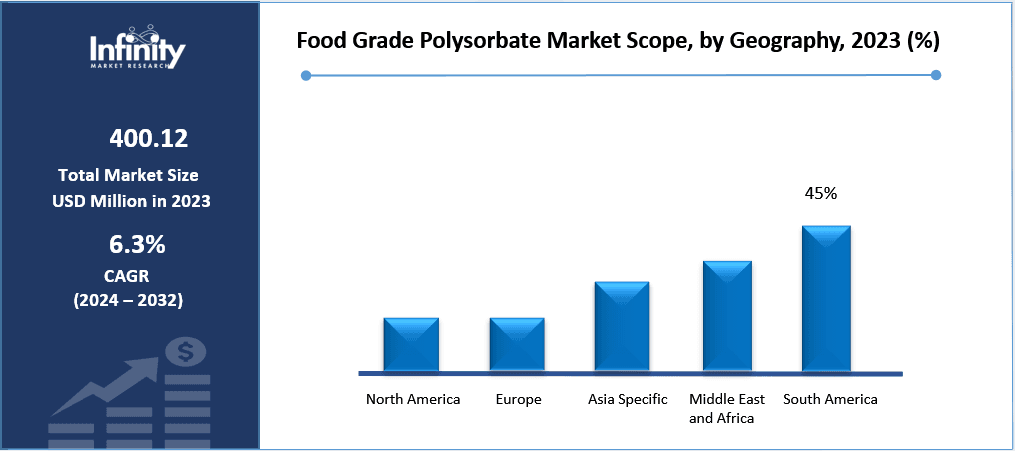
🔐 Secure Payment Guaranteed
Safe checkout with trusted global payment methods.
🌟 Why Choose Infinity Market Research?
At Infinity Market Research, we dont just deliver data — we deliver clarity, confidence, and competitive edge.
In a world driven by insights, we help businesses unlock the infinite potential of informed decisions.
Here why global brands, startups, and decision-makers choose us:
Industry-Centric Expertise
With deep domain knowledge across sectors — from healthcare and technology to manufacturing and consumer goods — our team delivers insights that matter.
Custom Research, Not Cookie-Cutter Reports
Every business is unique, and so are its challenges. Thats why we tailor our research to your specific goals, offering solutions that are actionable, relevant, and reliable.
Data You Can Trust
Our research methodology is rigorous, transparent, and validated at every step. We believe in delivering not just numbers, but numbers that drive real impact.
Client-Centric Approach
Your success is our priority. From first contact to final delivery, our team is responsive, collaborative, and committed to your goals — because you re more than a client; you re a partner.
Recent Reports
Global Myopia Control Lenses Market Report 2025-33
Hyaluronic Acid-based Dermal Fillers Market Report
Food Grade Polysorbate Market
Food Grade Polysorbate Market Global Industry Analysis and Forecast (2024-2032) By Type(Polysorbate 20, Polysorbate 40, Polysorbate 60, Polysorbate 80),By Application(Bakery and Confectionery, Dairy and Frozen Products, Beverages, Meat, Poultry, and Seafood, Sauces and Dressings, Others), By End-User(Food Processing Industry, Food Service Providers, Retail),By Distribution Channel(Direct Sales, Distributors, Online Channels) and Region
Jan 2025
Chemicals and Materials
Pages: 138
ID: IMR1432
Food Grade Polysorbate Market Synopsis
Food Grade Polysorbate Market Size Was Valued at USD 400.12 Million in 2023, and is Projected to Reach USD 693.41 Million by 2032, Growing at a CAGR of 6.3% From 2024-2032.
Food Grade Polysorbate pertains to emulsifiers made from sorbitol ester and fatty acids, in which the Polysorbate Market mainly consists of food applications. Such additives are used in reforming the structure of the food products, as well as their stability and shelf life. Products such as Polysorbate 20, 40, 60, and 80 are used widely in bakery, dairy products, beverages, processed foods because of their efficacy in emulsification of water and oil.
Over the years, the Food Grade Polysorbate Market has expanded substantially because of its importance in the betterment of food products. Polysorbates are used to enhance the stability of foods that are processed, act as emulsifiers as well as surfactants. Growth of the packaged food industry, due to factors such as increasing population density in urban centers and shifts to convenience foods has led to increased demand for polysorbates for use in food applications. That they find relevance in bakery, confectionery, dairy and frozen products makes them an essential tool in current food processing. Growth in awareness of food safety and Government policies and regulatory measures also play a key role in articulating the market by promoting the adherence to food grade standards by manufactures.
The global market is well-supported by the improvements in the production of emulsifiers and promoting its value for money and its effectiveness. Hurdles such as increases in raw material cost imply that while the market environment is promising, there are constant formulation improvements of food products.
Food Grade Polysorbate Market Outlook, 2023 and 2032: Future Outlook

Food Grade Polysorbate Market Trend Analysis
Rise in Clean-Label Products
With consumers turning more conscious about their health and products that are friendly to the environment, clean label trend is altering dynamics of Food Grade Polysorbate Market. Poly sorbates therefore come under more scrutiny as they are synthetic burdens but manufacturers are understanding the clean label concept and are working hard to make the label clean by being very open with the sources and processes used in arriving at the final product. This trend has led to the production of polysorbates that are organic and non-GMO so as to meet consumers’ needs and desires in terms of label clarity.
For that same reason, the clean-label trend has motivated developments of new compounds and novel solutions that mimic the characteristics of polysorbates. Many brands are taking advantage of this factor to promote their products as being safer, superior quality, and whose components are not only necessary but are in surplus. The change in customer preferences is likely to shape the food emulsifier market product differentiation, policies and consumer interactions in the next products that will be introduced in the market.
Expansion in Plant-Based Foods
The increasing use of plant based products is one of the biggest opportunities for the Food Grade Polysorbate Market. Polysorbates are especially important in keeping vegetable duplicates similar to animal products as far as texture, mouth feel and shape are concerned. This increase in the rate of plant-based food is in line with consumer moves towards healthier, green living.
Additionally, polysorbates are vital in increasing vitamin and nutritional content in plant derived products in order to combat nutritional compromises in such diets. As plant based foods become more and more popular food grade polysorbates producers can increase their sales by partnering with brands that are creating new vegan and/or allergen-free products. It is believed that this chance will stimulate creation and advance this promising food segment.
Food Grade Polysorbate Market Segment Analysis:
Food Grade Polysorbate Market Segmented on the basis of type, application, distribution channel and end user.
By type
o Polysorbate 20
o Polysorbate 40
o Polysorbate 60
o Polysorbate 80
By Application
o Bakery and Confectionery
o Dairy and Frozen Products
o Beverages
o Meat, Poultry, and Seafood
o Sauces and Dressings
o Others
By region
o North America (U.S., Canada, Mexico)
o Eastern Europe (Bulgaria, The Czech Republic, Hungary, Poland, Romania, Rest of Eastern Europe)
o Western Europe (Germany, UK, France, Netherlands, Italy, Russia, Spain, Rest of Western Europe)
o Asia Pacific (China, India, Japan, South Korea, Malaysia, Thailand, Vietnam, The Philippines, Australia, New-Zealand, Rest of APAC)
By Type, Polysorbate 20 segment is expected to dominate the market during the forecast period
The major types used in foods include polysorbate 20, polysorbate 40, polysorbate 60 and polysorbate 80; all of which possess different functionalities in foods. Polysorbate 20 is preferred because of its ability to dissolve easily and dissolve without causing interference in sensitive areas such as beverage and sauces. Polysorbate 60 and 80 are other commonly used emulsifiers found in baked and dairy products due to their high efficiency, and some stability in high fat spreads.
The current market trend is shifting toward more efficient polysorbates with a stronger safety propensity caused by the advancements made in the chemistry of synthesis and application of polysorbates. Such types of stocks have their specific function and serve in confronting certain problems of an industry to meet the variety of customer demands.
By Application, Bakery and Confectionery segment expected to held the largest share
Non-toxic food-grade polysorbates are widely used in baked and confectionery items, dairy and refrigerated products, soft drinks, meat, poultry and fish products, and sauces and salad dressings. For these segments, they make perfect stabilizers for emulsions and perfect texturizers, as well as shelf life enhancers.
The bakery and confectionery industry dominate the market because polysorbates have applications in dough conditioning and aeration. However, dairy and frozen products use polysorbates to avoid making their textures turn into a crystal and improving the creaminess. New opportunities for polysorbates’ further expansion are connected with the newly developing trends in plant_RUNNING hlavu days and products with a focus on their healthy properties.
Food Grade Polysorbate Market Regional Insights:
North America is Expected to Dominate the Market Over the Forecast period
North America has the largest share of demand in the food-grade polysorbate due to the developed food processing industry and increased consumer trends for processed food. Additional factors, such as continued development of more stringent regulations, and increased focus on food safety, also form a favorable market foundation that guarantees superior quality food additives to consumers in the region.
Similarly, it recognizes the leading position of North American market due to the concentration of key food manufacturers and consumers’ appreciation of innovations. The use of clean-label trends and eco-pal strategies also complements the current trends and needs of the consumer to fulfill the region’s leadership in the world.
Food Grade Polysorbate Market Share, by Geography, 2023 (%)

Active Key Players in the Food Grade Polysorbate Market
o Croda International (United Kingdom)
o BASF SE (Germany)
o Evonik Industries (Germany)
o Clariant AG (Switzerland)
o Lonza Group (Switzerland)
o Archer Daniels Midland Company (United States)
o Merck KGaA (Germany)
o Stepan Company (United States)
o Palsgaard A/S (Denmark)
o Oleon NV (Belgium)
o Sasol Limited (South Africa)
o Dow Chemical Company (United States)
o Other key Players
Global Food Grade Polysorbate Market Scope:
|
Global Food Grade Polysorbate Market | |||
|
Base Year: |
2023 |
Forecast Period: |
2024-2032 |
|
Historical Data: |
2017 to 2023 |
Market Size in 2023: |
USD 400.12 Million |
|
Forecast Period 2024-32 CAGR: |
6.3% |
Market Size in 2032: |
USD 693.41 Million |
|
Segments Covered: |
By Type |
· Polysorbate 20 · Polysorbate 40 · Polysorbate 60 · Polysorbate 80 | |
|
By Application |
· Bakery and Confectionery · Dairy and Frozen Products · Beverages · Meat, Poultry, and Seafood · Sauces and Dressings · Others | ||
|
By Region |
· North America (U.S., Canada, Mexico) · Eastern Europe (Bulgaria, The Czech Republic, Hungary, Poland, Romania, Rest of Eastern Europe) · Western Europe (Germany, UK, France, Netherlands, Italy, Russia, Spain, Rest of Western Europe) · Asia Pacific (China, India, Japan, South Korea, Malaysia, Thailand, Vietnam, The Philippines, Australia, New-Zealand, Rest of APAC) · Middle East & Africa (Turkey, Bahrain, Kuwait, Saudi Arabia, Qatar, UAE, Israel, South Africa) · South America (Brazil, Argentina, Rest of SA) | ||
|
Key Market Drivers: |
· Rising Demand for Processed and Packaged Foods | ||
|
Key Market Restraints: |
· Stringent Regulatory Frameworks | ||
|
Key Opportunities: |
· Growing Demand for Convenience Foods | ||
|
Companies Covered in the report: |
· Croda International (United Kingdom), BASF SE (Germany), Evonik Industries (Germany), Clariant AG (Switzerland), Lonza Group (Switzerland), Archer Daniels Midland Company (United States), Merck KGaA (Germany) and Other Major Players. | ||
📘 Frequently Asked Questions
1. What would be the forecast period in the Food Grade Polysorbate Market research report?
Answer: The forecast period in the Food Grade Polysorbate Market research report is 2024-2032.
2. Who are the key players in the Food Grade Polysorbate Market?
Answer: Croda International (United Kingdom), BASF SE (Germany), Evonik Industries (Germany), Clariant AG (Switzerland), Lonza Group (Switzerland), Archer Daniels Midland Company (United States), Merck KGaA (Germany) and Other Major Players.
3. What are the segments of the Food Grade Polysorbate Market?
Answer: The Food Grade Polysorbate Market is segmented into Type, Application, End User, Distribution Chanel and region. By Type, the market is categorized into Polysorbate 20, Polysorbate 40, Polysorbate 60, Polysorbate 80. By Application, the market is categorized into Bakery and Confectionery, Dairy and Frozen Products, Beverages, Meat, Poultry, and Seafood, Sauces and Dressings, Others. By End-User, the market is categorized into Food Processing Industry, Food Service Providers, Retail. By Distribution Channel, the market is categorized into Direct Sales, Distributors, Online Channels. By region, it is analyzed across North America (U.S.; Canada; Mexico), Eastern Europe (Bulgaria; The Czech Republic; Hungary; Poland; Romania; Rest of Eastern Europe), Western Europe (Germany; UK; France; Netherlands; Italy; Russia; Spain; Rest of Western Europe), Asia-Pacific (China; India; Japan; Southeast Asia, etc.), South America (Brazil; Argentina, etc.), Middle East & Africa (Saudi Arabia; South Africa, etc.).
4. What is the Food Grade Polysorbate Market?
Answer: Food Grade Polysorbate pertains to emulsifiers made from sorbitol ester and fatty acids, in which the Polysorbate Market mainly consists of food applications. Such additives are used in reforming the structure of the food products, as well as their stability and shelf life. Products such as Polysorbate 20, 40, 60, and 80 are used widely in bakery, dairy products, beverages, processed foods because of their efficacy in emulsification of water and oil.
5. How big is the Food Grade Polysorbate Market?
Answer: Food Grade Polysorbate Market Size Was Valued at USD 400.12 Million in 2023, and is Projected to Reach USD 693.41 Million by 2032, Growing at a CAGR of 6.3% From 2024-2032.


🔐 Secure Payment Guaranteed
Safe checkout with trusted global payment methods.
🌟 Why Choose Infinity Market Research?
- Accurate & Verified Data:Our insights are trusted by global brands and Fortune 500 companies.
- Complete Transparency:No hidden fees, locked content, or misleading claims — ever.
- 24/7 Analyst Support:Our expert team is always available to help you make smarter decisions.
- Instant Savings:Enjoy a flat $1000 OFF on every report.
- Fast & Reliable Delivery:Get your report delivered within 5 working days, guaranteed.
- Tailored Insights:Customized research that fits your industry and specific goals.




